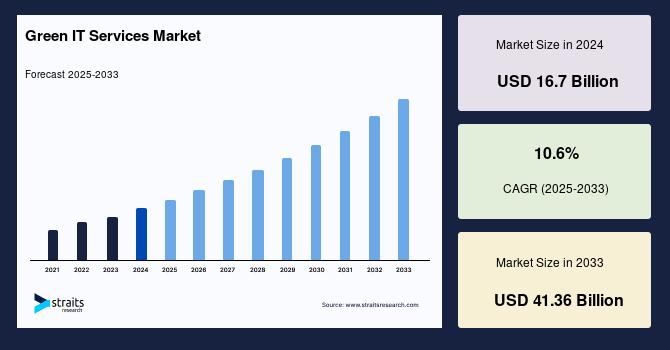Solid waste district working to expand center for hard-to-recycle materials – Athens County Independent

Report on Household Hazardous Waste Management Initiatives in Athens County, Ohio
A report on current and proposed projects by local waste management organizations in Athens County, Ohio, reveals a strategic effort to improve the collection and disposal of household hazardous waste (HHW). These initiatives align with several United Nations Sustainable Development Goals (SDGs), particularly those concerning public health, environmental protection, and sustainable community development.
Enhancing Local Infrastructure for Sustainable Waste Management
Efforts are underway to transition from periodic collection events to permanent, year-round facilities. The establishment of Centers for Hard to Recycle Materials (CHaRMs) represents a significant infrastructural investment in sustainable waste management, directly supporting SDG 11 (Sustainable Cities and Communities) by providing residents with accessible and reliable services for hazardous materials.
Athens-Hocking Solid Waste District: Sutton Road Recycling Center Expansion
The Athens-Hocking Solid Waste District is advancing a project to upgrade its Sutton Road Recycling Center in Logan into a fully operational CHaRM. This development is crucial for achieving responsible production and consumption patterns as outlined in SDG 12.
- Objective: To convert the current appointment-only drop-off point into a permanent facility with regular operating hours for HHW and other hard-to-recycle items.
- Upgrades: The renovation includes the installation of heating, cooling, and running water. These climate-control systems are essential for the safe storage of volatile materials like paint and chemicals, preventing degradation and environmental hazards, which contributes to SDG 3 (Good Health and Well-being) and SDG 6 (Clean Water and Sanitation).
- Operational Plan: The facility will enable more frequent collections by disposal partners, such as Environmental Enterprises, and facilitate specialized collection drives. For example, paint drives could allow for the redistribution of usable paint to community groups, promoting a circular economy in line with SDG 12.
- Project Status: The project is currently in the bidding process for renovations, with no estimated completion date.
Southeast Ohio Recycling Terminal (SORT) CHaRM Proposal
The Southeast Ohio Recycling Terminal (SORT) also plans to construct a CHaRM in Athens County, further bolstering the region’s capacity for sustainable waste management.
- Objective: To build a comprehensive, one-million-dollar facility to serve Athens County residents year-round.
- Scope of Services: The proposed center would accept a wide range of materials, including HHW, lawn waste, mattresses, and textiles, providing an integrated solution for waste diversion.
- Partnerships: SORT intends to collaborate with Rural Action and the Athens-Hocking Solid Waste District, exemplifying the multi-stakeholder cooperation essential for achieving SDG 17 (Partnerships for the Goals).
Operational Models and Strategic Considerations
The transition to a year-round collection model involves evaluating both benefits and challenges, while recognizing the continued importance of public education for fostering responsible consumer behavior.
Analysis of Year-Round vs. Event-Based Collection
A U.S. Environmental Protection Agency representative noted the advantages and disadvantages of different collection models.
- Year-Round Programs: These offer greater accessibility and convenience, helping to establish regular habits of responsible disposal among residents, which is a key behavioral outcome for supporting SDG 12.
- Event-Based Programs: While less convenient, these programs are often more cost-effective. Brian DePeel of Environmental Enterprises highlighted the significant operational costs associated with permanent facilities.
The Athens-Hocking Solid Waste District plans to continue hosting collection events even after its CHaRM is operational, using them as educational tools to maintain public awareness about HHW, a critical component of fostering the responsible consumption targeted by SDG 12.
Legislative Frameworks: Extended Producer Responsibility (EPR)
Extended Producer Responsibility (EPR) is being considered as a policy mechanism to create a more sustainable and equitable system for HHW management.
EPR as a Policy Tool for SDG 12
EPR legislation shifts the financial and logistical burden of end-of-life product management from municipalities and taxpayers to the producers of those products. This policy directly addresses the core principles of SDG 12 (Responsible Consumption and Production) by holding manufacturers accountable for the entire lifecycle of their goods.
- National Context: While there are no federal EPR laws, 34 states have enacted such legislation. Ohio currently has no EPR laws.
- Legal Precedent: The legality of local-level EPR ordinances was upheld by the 9th Circuit Court of Appeals in a case involving pharmaceutical waste in Alameda County, California, setting a precedent for other counties.
Local Stakeholder Perspectives on EPR
There is significant local support for implementing an EPR policy, alongside cautious consideration from elected officials.
- Support from Waste Professionals: Maria Bonner of Rural Action and Jane Forrest Redfern of the Athens-Hocking Solid Waste District both endorsed EPR, framing it as a “social responsibility law” that ensures producers manage the hazardous materials they introduce to the market.
- Response from Public Officials:
- Several officials, including County Commissioner Chris Chmiel and Athens City Council members, expressed interest in learning more about EPR.
- Other officials, including County Commissioner Lenny Eliason and Athens City Council President Sam Crowl, raised concerns about the legal authority of local government to enact such a policy and the potential impacts on industries and consumers.
- Mr. Crowl stated that support would be contingent on a sustainability assessment demonstrating clear benefits for residents and the environment that outweigh program costs, reflecting a balanced approach to implementing policies that advance the SDGs.
Identified Sustainable Development Goals (SDGs)
SDG 3: Good Health and Well-being
- The article addresses the proper collection and disposal of household hazardous waste, such as paint, cleaning chemicals, and batteries. Safely managing these materials prevents them from contaminating soil and water, thereby reducing human exposure to hazardous chemicals and protecting public health, which is a core component of SDG 3.
SDG 9: Industry, Innovation and Infrastructure
- The development of new and upgraded infrastructure is a central theme. The article details plans by the Athens-Hocking Solid Waste District to renovate its Sutton Road Recycling Center and for the Southeast Ohio Recycling Terminal (SORT) to build a new Center for Hard to Recycle Materials (CHaRM). These projects aim to create “quality, reliable, sustainable and resilient infrastructure” to provide a year-round, accessible service for residents.
SDG 11: Sustainable Cities and Communities
- The article focuses on improving municipal waste management systems within Athens County. By creating dedicated facilities (CHaRMs) and programs for household hazardous waste, the community is working to “reduce the adverse per capita environmental impact of cities, including by paying special attention to… municipal and other waste management.”
SDG 12: Responsible Consumption and Production
- This goal is addressed through multiple angles. The primary focus is on the environmentally sound management of waste, specifically hazardous chemicals. The article also discusses recycling and reuse, such as giving usable old paint to “school groups or churches.” Furthermore, the extensive discussion on Extended Producer Responsibility (EPR) legislation directly relates to holding producers accountable for the entire life-cycle of their products, a key strategy for sustainable production.
SDG 17: Partnerships for the Goals
- The article highlights collaboration among various entities. The Athens-Hocking Solid Waste District, the Southeast Ohio Recycling Terminal (SORT), and the non-profit Rural Action are all working on waste management solutions. The district also partners with a private company, Environmental Enterprises, for waste disposal. The discussion around EPR involves partnerships between different levels of government (local, state, federal) and advocacy groups like the Product Stewardship Institute.
Specific SDG Targets
Target 11.6: Reduce the adverse per capita environmental impact of cities, including by paying special attention to air quality and municipal and other waste management.
- The entire initiative described in the article—creating year-round collection points (CHaRMs) to streamline the disposal of household hazardous waste—is a direct effort to improve municipal waste management and reduce the environmental impact of the community.
Target 12.4: By 2020, achieve the environmentally sound management of chemicals and all wastes throughout their life cycle… and significantly reduce their release to air, water and soil in order to minimize their adverse impacts on human health and the environment.
- The article details plans to collect and safely store hazardous materials like paint and chemicals. Jane Forrest Redfern notes that upgrading the center with heating and cooling is necessary for the “safe storage of more materials,” preventing decomposition and potential environmental release. Partnering with Environmental Enterprises ensures professional disposal.
Target 12.5: By 2030, substantially reduce waste generation through prevention, reduction, recycling and reuse.
- The article provides a specific example of reuse and recycling: “if the paint is not that old, school groups or churches or whoever, here’s fresh paint you can use. If not, we’ll send it off for recycling.” This directly contributes to reducing the amount of waste that requires disposal.
Target 9.1: Develop quality, reliable, sustainable and resilient infrastructure… with a focus on affordable and equitable access for all.
- The proposal to expand the Sutton Road Recycling Center and build a new CHaRM facility in Athens County are examples of developing sustainable infrastructure. The goal is to move from annual events and appointment-only drop-offs to facilities with “regular hours,” making them more accessible and convenient for all residents, as noted by a U.S. EPA representative.
Implied Indicators for Measuring Progress
Indicators for Waste Management and Recycling
- Volume of hazardous waste collected: While no specific numbers are given, the establishment of year-round facilities implies an intention to increase the total amount of household hazardous waste captured and properly managed.
- Recycling and reuse rates: The example of reusing or recycling old paint suggests that a key metric would be the quantity of materials diverted from disposal and channeled into reuse or recycling programs.
- Frequency of collection services: The article mentions the plan for Environmental Enterprises to “come every six weeks to collect materials” from the new facility, which is a measurable indicator of the program’s operational capacity.
Indicators for Infrastructure and Accessibility
- Number of operational CHaRM facilities: The article discusses plans for two such facilities. Tracking their construction and operational status would be a primary indicator of progress.
- Accessibility of services: A key indicator is the shift from “annual household hazardous waste collection day” and “appointment only” drop-offs to facilities with “regular hours,” which measures the improvement in service convenience for residents.
Indicators for Policy and Governance
- Adoption of EPR legislation: The article states that “Ohio currently has no EPR laws.” Therefore, a clear indicator of progress would be the introduction and passage of such legislation at the county or state level, a goal supported by several local waste activists.
SDGs, Targets, and Indicators Summary
| SDGs | Targets | Indicators Identified in the Article |
|---|---|---|
| SDG 11: Sustainable Cities and Communities | Target 11.6: Reduce the adverse environmental impact of cities, particularly in waste management. |
|
| SDG 12: Responsible Consumption and Production | Target 12.4: Achieve environmentally sound management of chemicals and all wastes.
Target 12.5: Substantially reduce waste generation through recycling and reuse. |
|
| SDG 9: Industry, Innovation and Infrastructure | Target 9.1: Develop quality, reliable, sustainable, and resilient infrastructure. |
|
| SDG 3: Good Health and Well-being | Target 3.9: Substantially reduce deaths and illnesses from hazardous chemicals and pollution. |
|
| SDG 17: Partnerships for the Goals | Target 17.17: Encourage effective public, public-private, and civil society partnerships. |
|
Source: athensindependent.com

What is Your Reaction?
 Like
0
Like
0
 Dislike
0
Dislike
0
 Love
0
Love
0
 Funny
0
Funny
0
 Angry
0
Angry
0
 Sad
0
Sad
0
 Wow
0
Wow
0



























;Resize=805#)




















































